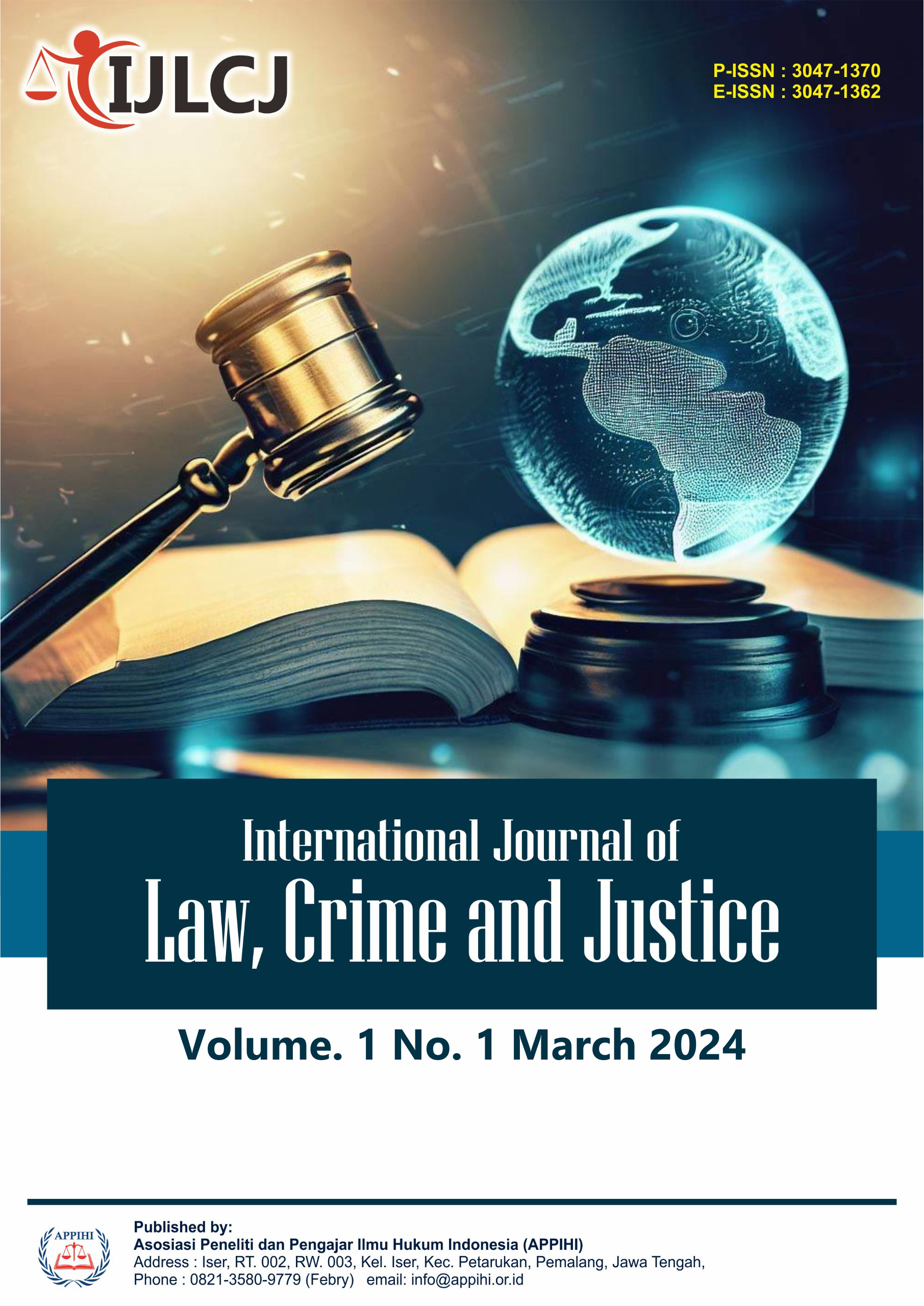Cybercrime Legislation in The Age Of Digital Transformation: Challenges and Future Directions
DOI:
https://doi.org/10.62951/ijlcj.v1i1.249Keywords:
Cybercrime, Digital transformation, Legal frameworks, International collaboration, Cross-border crimeAbstract
This article explores the challenges of developing effective cybercrime legislation in the era of rapid digital transformation. By analyzing current laws across various jurisdictions, the study identifies gaps in legal frameworks that cybercriminals exploit, such as issues related to jurisdiction, anonymity, and cross-border crime. Findings indicate that, while several nations have made strides in strengthening cybercrime laws, a cohesive international approach and consistent policy updates are essential to keep pace with the evolving nature of cyber threats. The paper advocates for enhanced international collaboration, cross-border enforcement mechanisms, and adaptable legal frameworks that can respond to future digital transformations.
Downloads
References
Bada, M., & Nurse, J. R. (2019). The social and cultural impact of cybercrime: Ethical issues in an internet age. Ethics and Information Technology, 21(2), 65–77. https://doi.org/10.1007/s10676-019-09585-7
Clough, J. (2018). Principles of cybercrime. Cambridge University Press.
Council of Europe. (2020). The Budapest Convention on Cybercrime: Scope and implications for global cybersecurity. https://www.coe.int/en/web/cybercrime/budapest-convention
European Union Agency for Cybersecurity (ENISA). (2020). Cybersecurity in the EU: An overview of policies and practices. https://www.enisa.europa.eu/topics/csirt-cert
Goodman, M., & Brenner, S. (2020). Cybercrime: An introduction to an evolving threat. Cybersecurity and Privacy Journal, 6(1), 28–42. https://doi.org/10.1016/j.cyb.2020.01.001
Grant, A. (2021). Challenges in cybercrime legislation: A perspective from Jamaica. Journal of Digital Policy, 12(3), 145–160. https://doi.org/10.1016/j.jdpol.2021.05.001
International Telecommunication Union (ITU). (2020). Global Cybersecurity Index 2020: Key findings and recommendations. https://www.itu.int/en/ITU-D/Cybersecurity/Pages/GCI.aspx
Kshetri, N. (2021). Blockchain and cybercrime: Evolving risks and opportunities. Journal of Cybersecurity Studies, 5(2), 112–127. https://doi.org/10.1016/j.jocs.2021.07.001
McKenzie, D. R. (2021). Jurisdictional issues in cybercrime: An analysis of Caribbean perspectives. International Journal of Cyber Law, 9(4), 99–121. https://doi.org/10.2139/ssrn.3729389
Sinclair, N. (2020). Cross-border crime and cybersecurity: A review of international cooperation efforts. Global Cyber Policy Review, 13(1), 73–88. https://doi.org/10.1080/24689732.2020.1736036
Solms, R., & Niekerk, J. (2019). Cybersecurity legislation: Gaps and future directions. Journal of Cybersecurity, 11(2), 45–58. https://doi.org/10.1016/j.jocs.2019.03.001
United Nations Office on Drugs and Crime (UNODC). (2019). Combating cybercrime through international cooperation: A policy report. https://www.unodc.org/unodc/en/cybercrime/index.html
White, J. (2020). Encryption and law enforcement challenges in digital investigations. Digital Security and Privacy Journal, 4(2), 27–50. https://doi.org/10.1007/s11270-020-09406-8
World Economic Forum. (2021). Global risks report 2021: The evolving cybersecurity landscape. https://www.weforum.org/reports/the-global-risks-report-2021
Zwick, P. (2019). Privacy and anonymity in cybercrime legislation: A comparative study. European Journal of Law and Technology, 10(3), 207–230. https://doi.org/10.2139/ssrn.3484739
Downloads
Published
How to Cite
Issue
Section
License
Copyright (c) 2024 International Journal of Law, Crime and Justice

This work is licensed under a Creative Commons Attribution-ShareAlike 4.0 International License.





